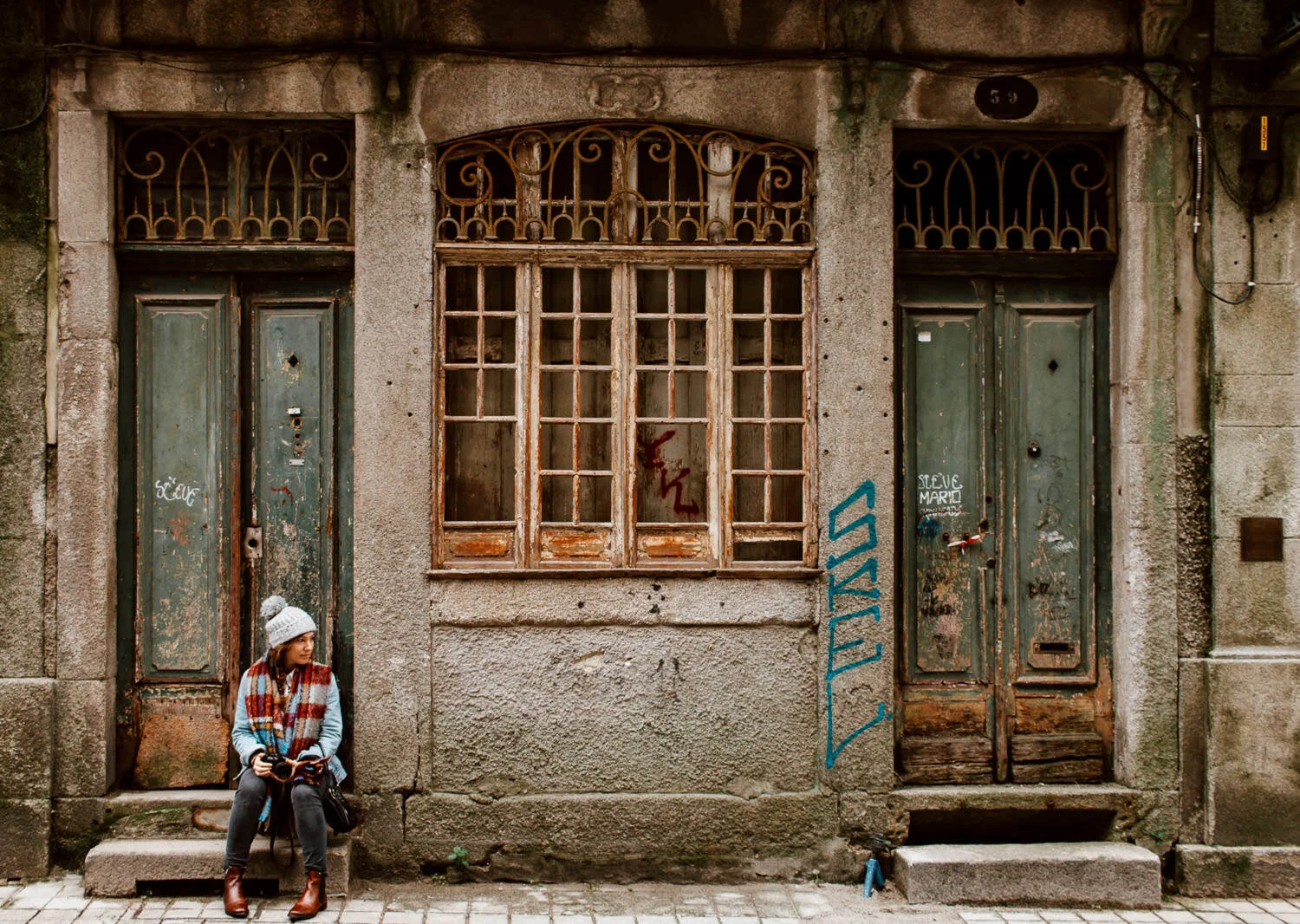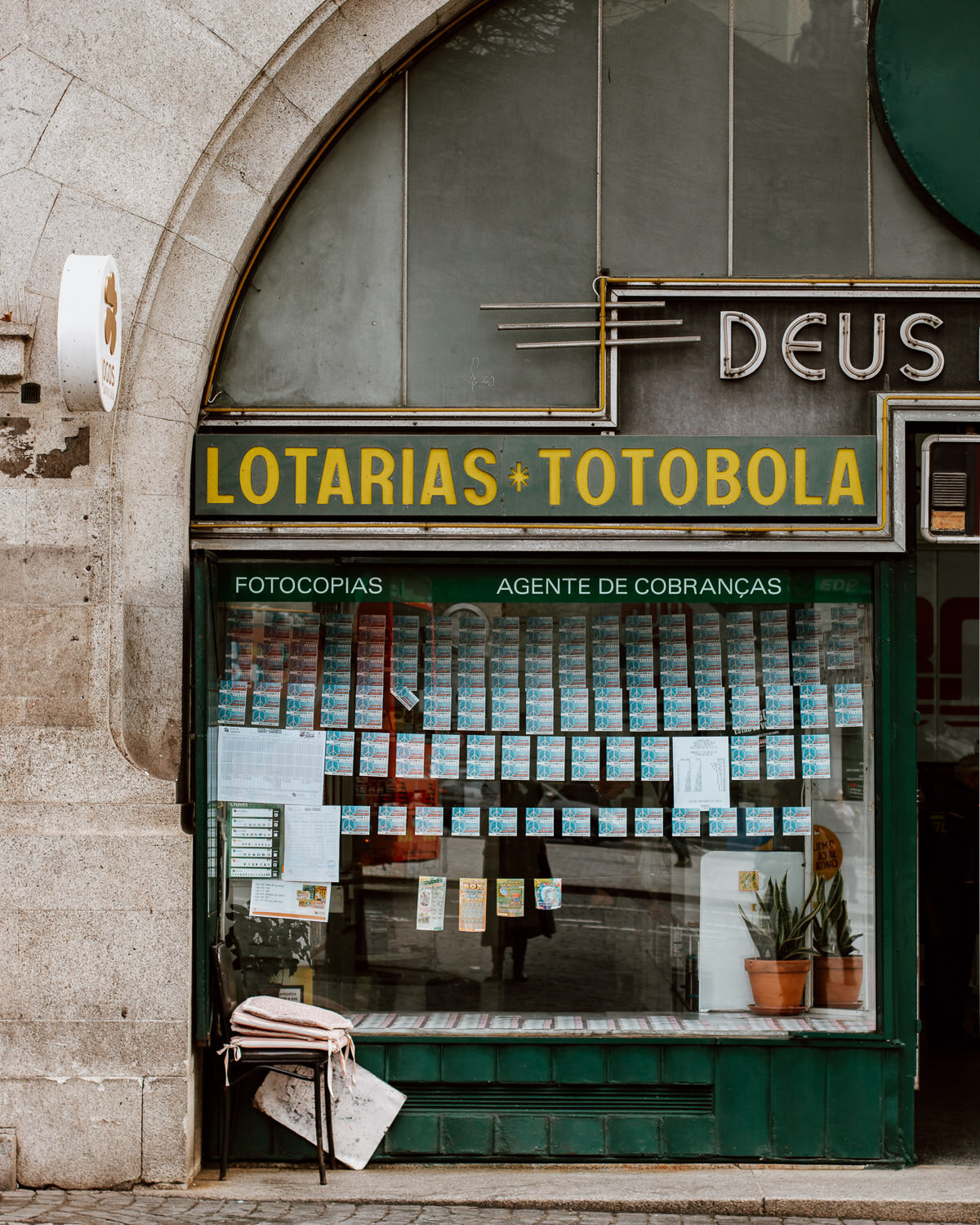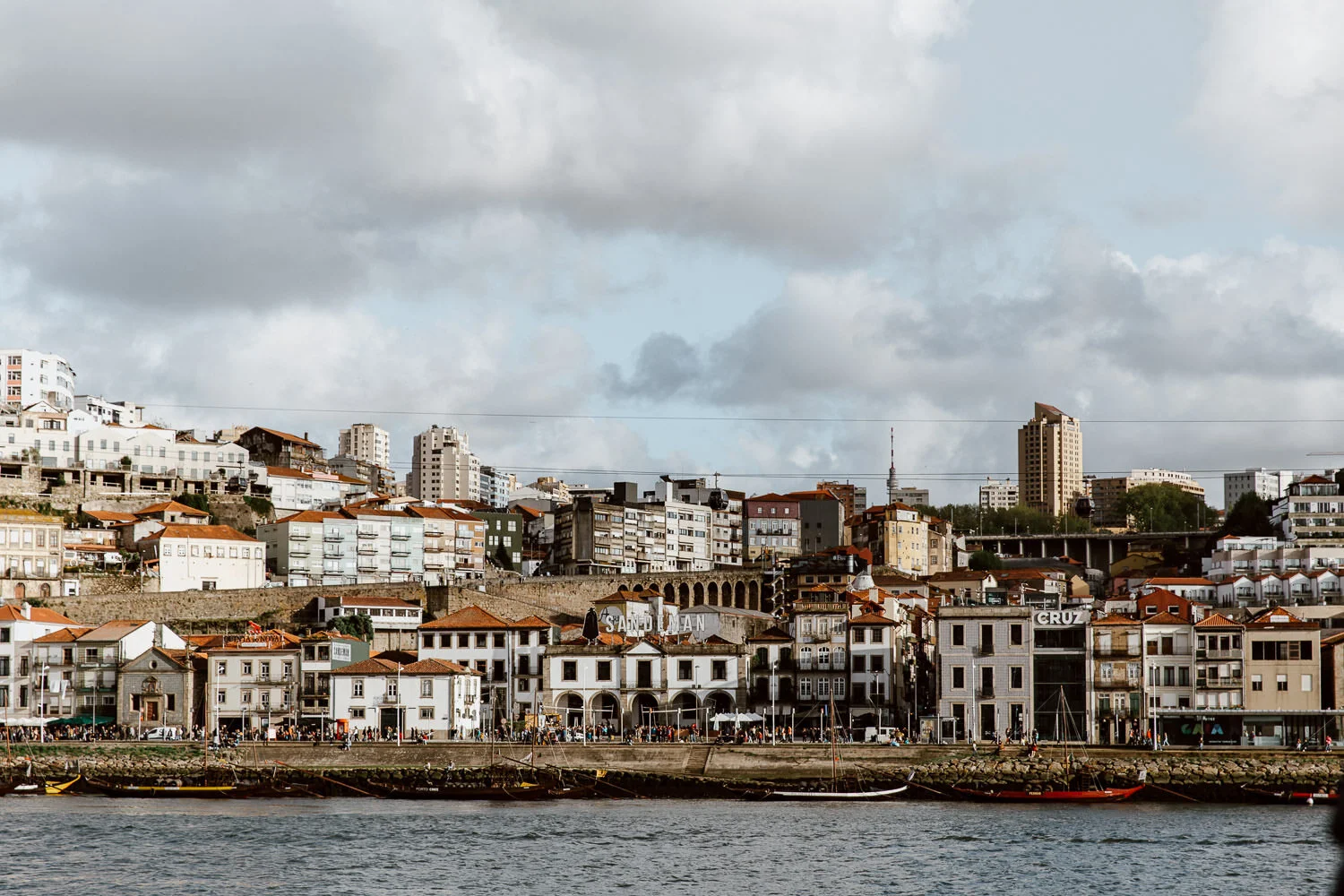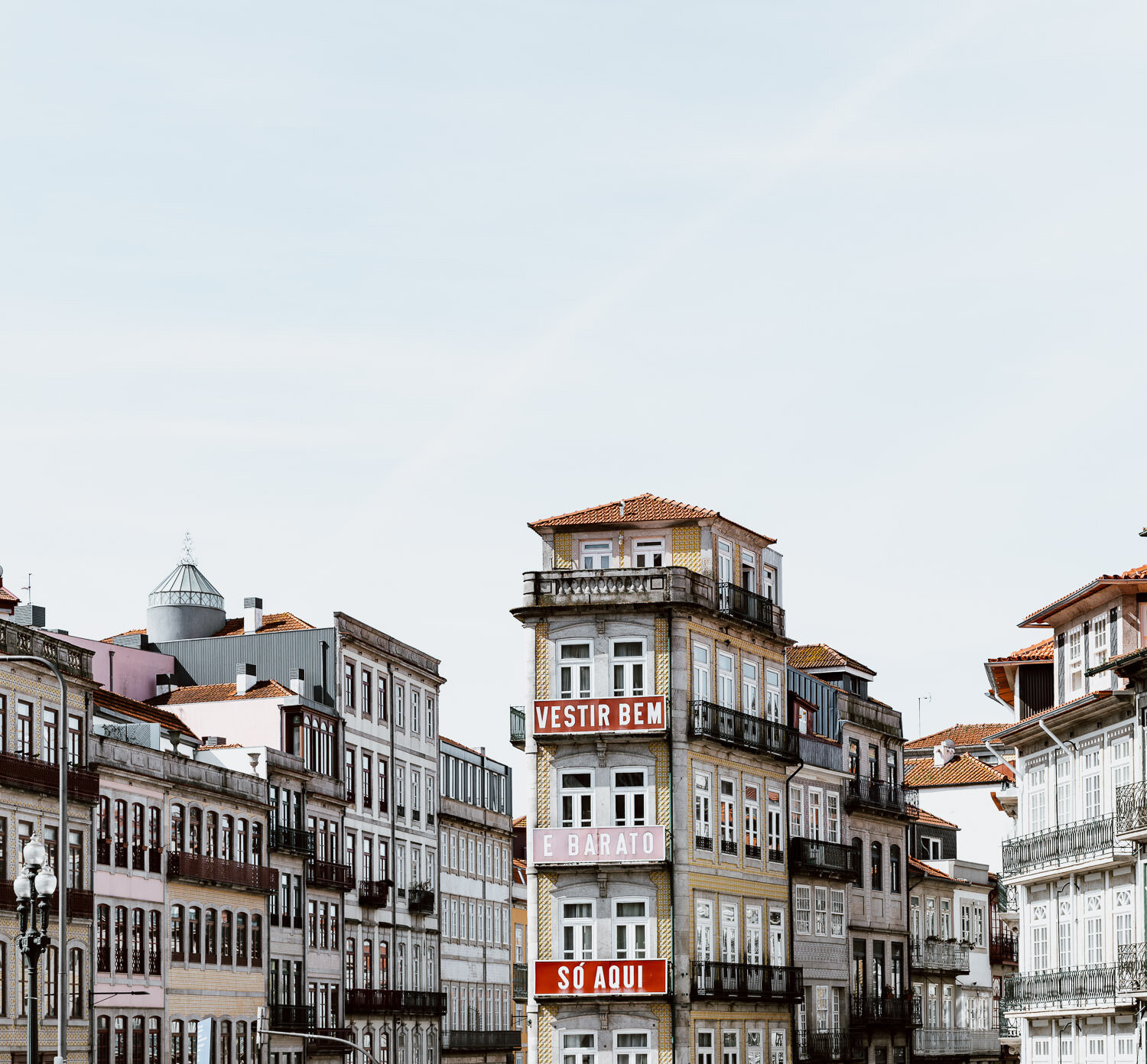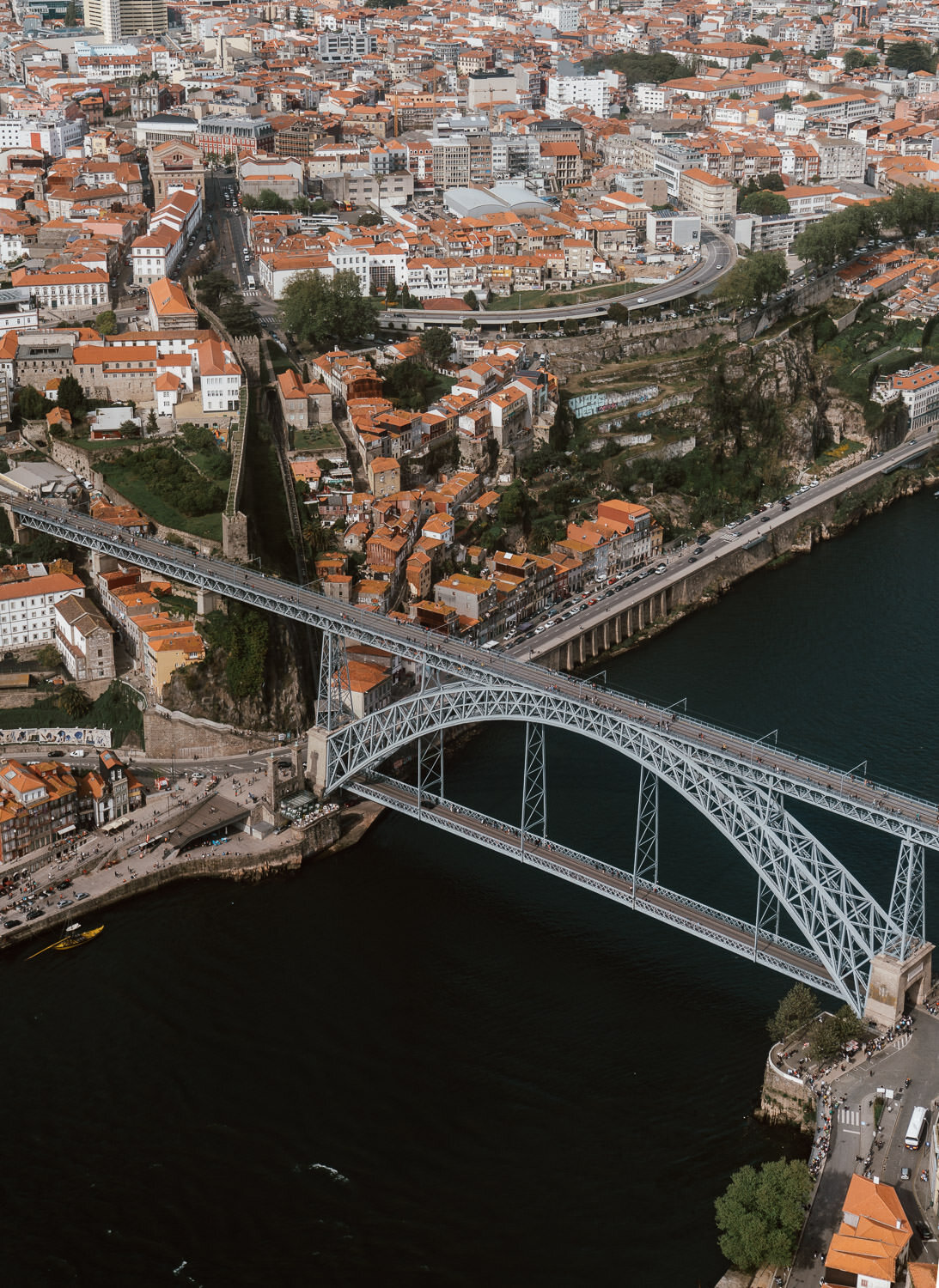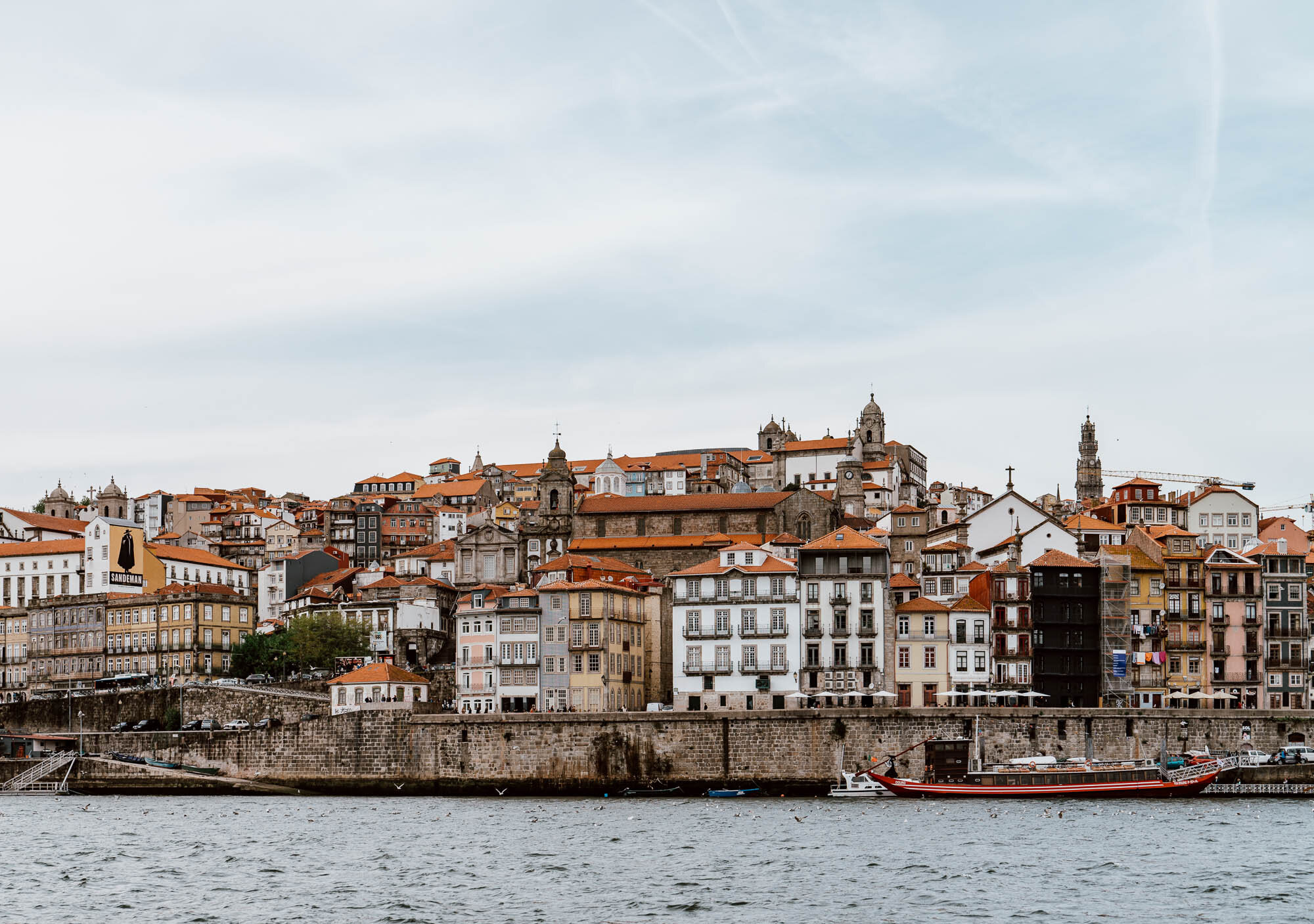Want to know how to get to the city from Porto airport, whether the ‘Porto Card’ is actually worth it, or why you should give fado a miss?
This is the post for you.
Sitting aside our super-duper in depth ‘Things to Do in Porto’ post, this article aims to fill in a few practical gaps and offer up some useful travel tips for all visitors to the city, whether that be a short weekend getaway or a longer stay in the summer.
Here are 9 essential Porto travel tips that you should know before you go!
How to get to / from Porto airport
Hands down, the very best way to get to Porto city centre from the airport is with the city’s metro service, which is connected via the ‘E’ line. There are three departures every hour between 6 a.m. and midnight.
Tickets can be purchased within the airport metro station from one of several machines, but do note that first time visitors will need to ensure that it also sells the ‘Andante’ card, a reusable top-up card to which you can load your prepaid journeys. Don’t worry, it’s very obvious which do and don’t but if in doubt there will be a member of staff to point you in the right direction.
The Andante card will automatically be added on to your ticket cost (60 cents per card), so you don’t need to worry about purchasing this separately.
After selecting your language on the machine, select the option to buy a single journey from the airport to the city centre which will cost €2 per person (making the entire journey, including the Andante card, €2.60). Payment can be made in cash or card but do note that not all machines accept both.
The final destination of the metro Line E is Trindade (in the middle of the city centre), but do note that depending upon your accommodation location you may need to change here, or at one of the preceding stops, on to another metro line. This change, if required, is included in your ticket price.
Journey time to Trinidade is 27 minutes.
If you are going to be using the metro and buses in Porto a lot during your trip, then the most economical decision when buying your ticket at the airport is to opt for the ‘10 single tickets’ option on the machine. This will load 10 journeys on the Andante card at a cheaper ‘bulk’ rate.
If you will only use public transport 2 or 3 times on your visit, then simply top up the Andante card at any metro station before travelling.
There is a public bus service from the airport, but given that it takes longer than the metro for the same price, we’d advise against using it unless you have no other choice.
Authorised taxis from Porto airport cost between €20 - €25 and should - by law - use their meter. Do insist on this, as some unscrupulous drivers have been known to prey on unsuspecting tourists. Alternatively, Uber is popular in Porto and cheaper than a standard taxi.
Consider investing in The Porto Card
Despite what some tourism boards will tell you, not all city cards are worth it. If you plan to visit many of the city’s paid for attractions however, we think The Porto Card really is rather good!
You can buy a card for one, two, three or four days - with or without unlimited free public transport usage thrown in. So, if you think you’ll be using the metro or buses lots during your trip, in addition to enjoying the various discounts on the Porto Card, it’s definitely more cost effective to add on the transport option rather than bulk-buying single tickets as outlined in the section above.
So, for the avoidance of doubt, if you are going to buy the Porto Card with unlimited transport, just pay the €2.60 at the airport!
Several museums provide free entry to Porto Card holders, but we don’t feel that these were museums that would appeal to everyone (we actually didn’t personally visit any of them across our two trips).
However, many of the most popular museums provide significant discounts of up to 50% - and we did visit several of these. They include:
Casa Da Música (tour)
Igreja e Torre Clérigos
Museu De Arte Contemporânea Serralves
Museu De Arte Sacra E Arqueologia
Military Museum Porto
Museu Nacional Da Imprensa
Museu Nacional Soares Dos Reis
Museu Das Marionetas
Palácio Da Bolsa
Catedral Terreiro da Sé
World Of Discoveries
Estádio Do Dragão (tour) & Museum of FC Porto
There are also a whole host of city tours, bike rental companies and even surf schools that offer discounts of around 20%, not to mention port houses offering 2-4-1 wine tasting opportunities, money off in bars and even restaurants.
Obviously, the Porto Card is only good value if you plan on doing a lot of sight-seeing with a price tag attached - if you’re much more keen to simply explore on foot with no real plan, then the card would be a waste of money. If however, you love a good museum, or are visiting in the cooler/rainier months when indoor activities are a priority, then at only 10 Euro per person for two days, it would save you an awful lot of money (and potentially make this the most useful Porto travel tip in this post!).
Further information | Follow these links for more information and prices for the ‘Porto Card Walker’, and the ‘Porto Card with Transportation’.
It’s beginning to suffer from overtourism
Between our first trip in early 2017 and our second during spring 2019 a very obvious shift had occurred in Porto, one that we’re not entirely sure is for the better - it had become become an insanely popular city break destination.
Overtourism (and trying to raise awareness of its worst excesses ) is something we have become increasingly passionate about in the last few years, and so it feels appropriate to discuss here. We are not trying to discourage you from visiting Porto, but rather to offer a couple of insights on how increasing tourist numbers can be be a positive for the city, rather than a negative. After all, nobody wants another Barcelona effect!
The important thing to be aware of is that, whilst the historical centre is heaving with visitors (quite unpleasantly so in some instances) there are many places in the city where crowds are much thinner, and where locals still felt as if they outnumbered tourists.
Of course, everybody has to wander along the Duoro River, visit Livraria Lello and eat at the best pastel de nata bakeries, but try to reserve a few stops in your itinerary to visit the less well-trodden parts of the city. Take the bus to Matosinhos for old-Porto vibes and new architecture, check out museums and galleries outwith the main centre (Serralves is a fantastic shout!), take a walk along the river to quieter neighbourhoods full of authentic charm or opt for the odd day trip into the surrounding region.
Read More | 13 Wonderful Things to Do in Porto
Don’t expect blue skies all the time
Being in the north west coast of Portugal, not the sunnier southern stretches, Porto’s weather tends to be a little different than many assume. So, for those of you hoping to disappear for some late autumn or early pring sun, you may have to readjust your expectations - this city gets a hell of a lot of rain!
In fact, for both of our trips, we encountered far more grey skies than we did blue, and found ourselves sheltering from the rain more than we’d like to admit.
That doesn’t mean it’ll be Atlantic grey or overcast when you visit, but it can’t just be our bad luck! If warmer weather is a prerequisite for your trip, try and get yourself out there between June and late August. Visitor numbers will be at their highest but so will your chances of sunny days, with an average temperature of 25C and very few rain storms.
If you, like us, feel that there’s no rainy situation that can’t be solved with a trusty umbrella and decent jacket, we’d recommend visiting Porto during the shoulder months. The temperatures are not entirely unpleasant (and you may even get a run of spectacular weather), the tourist numbers are much more tolerable and accommodation options plentiful.
Give the Fado a miss
It is said that “fado is the musical expression of Portuguese people”.
So if Porto is the first place you’ve ever visited in Portugal, with no plans to venture further south, it could be tempting to join one of the many tourist-touted nightly fado shows across the old town.
However, we have a warning - don’t.
Fado simply isn’t a huge part of this city’s culture, and any performance, no matter how well meaning, is likely to be inauthentic - and quite possibly - disappointing.
Wait for Lisbon, we promise it’ll be worth it.
It gets super busy during the Festival of São João
Every city has its big annual festival, and in Porto that’s the Festival of São João (the city’s patron saint), held on the 23rd June.
With a history that dates back to the 14th century, and symbolism from Pagan and Catholic religions, the huge celebration combines both sacred and debaucherous traditions in a night filled with food, culture, fireworks and an awful lot of fun!
Although popular within family homes, this is a festival that is very much celebrated in the streets, and as such is a massive draw for national and foreign tourists.
As you can imagine, accommodations get booked up pretty far in advance and if left to last minute, flights/transport options can get pretty pricey. So, a key porto travel tip for those keen to attend, is to be sure to get everything sorted with as much notice as possible.
Top tip | Check out our post on the best airbnbs in Porto - for every budget!
Read More | The Best Day Trips from Porto
You wanna visit that bookshop - prepare to queue!
The dream of the two brothers, Livraria Lello was built in 1906 as a home for the studious, the curious, and the intellectual. Today however, the bookshop reflects the dramatic growth of Porto as a tourist destination, the impact of Instagram, and the effect of Harry Potter on this historic city’s own story.
Attracting up to 4,000 visitors per day, and with queues of eager tourists lining up along Rua Das Carmelitas long before the show opens its doors at 9.30 a.m., it’s helpful to know that there is one trick to shorten the waiting time and make the most of your visit - buy your ticket online or at the ticket shop a couple of doors down in advance and get yourself in the queue to enter an hour before.
The City Centre Ruins
It was a stark surprise on our first visit to Porto to see just how many of the buildings in Porto’s central old town were in a dilapidated state of disrepair and semi-ruin. Broken windows, cracked dirty azulejos, and abandoned interiors. In certain streets, it was incredibly run down and desolate. At that time, nearly one in five buildings in central Porto lay vacant.
There were several reasons for this over the last three decades - from archaic rental legislation, suburban population shifts, and a rollercoaster economy - and these open wounds in such a beautiful city were at odds with what many visitors had pictured.
Thankfully, the increased tourism has had the positive impact of regenerating many of these city centre buildings in a tasteful way. The downside of this, of course, is that many of these buildings are only made available was holiday apartment rentals - thereby creating another problem for Porto’s old town.
So, if you see several abandoned or ruined buildings on your explorations around Porto, now you know at least part of the story!
It’s Porto, not Oporto.
Although it’s slowly falling out of favour, you may occasionally hear Porto called ‘Oporto’, a mispronunciation by the British many years ago that sort of stuck around. Andrew used to use it when he thought he was being all fancy-pants, and was a tad embarrassed to find out he’d been make a fool of himself (yet again).
Although you won’t cause great offence if you make the same mistake around a local, it’s good practice to try to always refer to Portugal’s second city as Porto.


